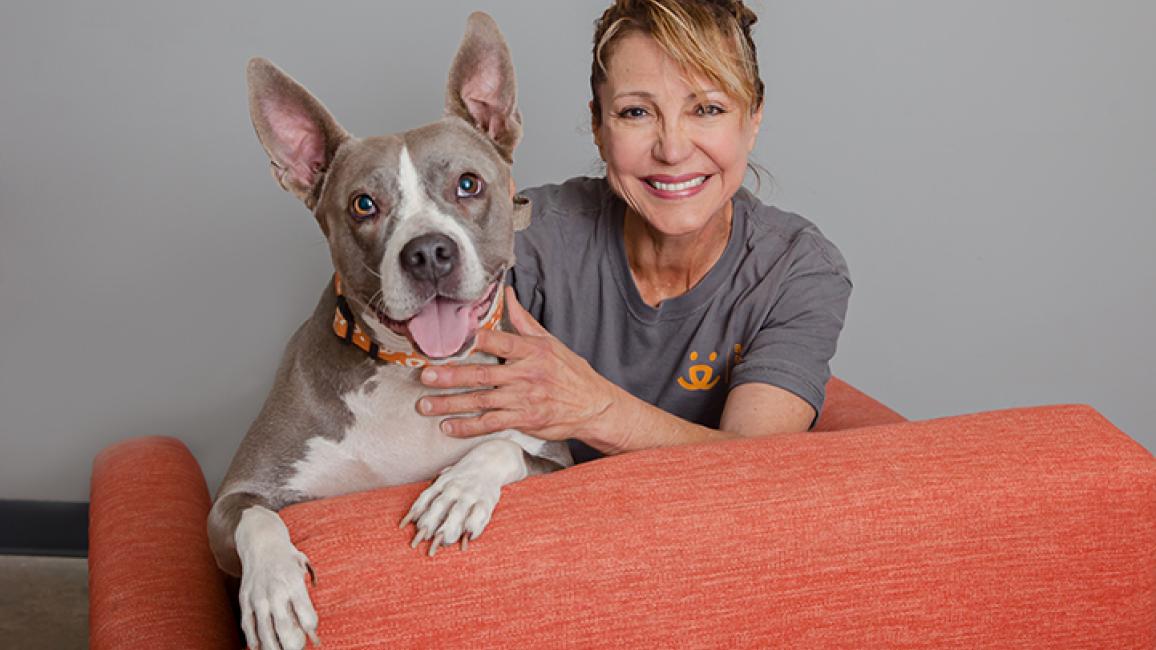NKLA: Calling all heroes!

The city of Los Angeles is on a final push to achieve the no-kill threshold of a 90 percent save rate by the end of this year. I can’t adequately express how excited I am about that!
There is energy, optimism and collaboration to achieve this important goal, but that wasn’t always the case. Quite the reverse, in fact.
When Best Friends and our NKLA Coalition partners first met in December 2010 to begin the year-long planning to form the citywide NKLA (No-Kill Los Angeles) initiative, which officially launched in April 2012, many people thought we were gluttons for punishment, crazy, or both.
The six city shelters were taking in more than 53,000 dogs and cats per year, with a 57 percent save rate. The city’s animal welfare community was in the middle of a decade-long “food fight” involving L.A.’s mayors, Los Angeles Animal Services (LAAS), local rescue groups and animal rights groups over how to fix what was widely regarded as an animal services department that had been failing L.A.’s homeless pets for decades.
Generously speaking, the whole thing was a circus and the overall effect was to create what seemed to be an unworkably toxic environment. Anyone who stepped forward to lead became a target and several no-kill “celebrities” who had achieved notable success in other cities declined the invitation to step into or apply for the general manager’s role to attempt to lead the nation’s second largest city to no-kill.
Happily, that is no longer the case. LAAS is in its ninth year of leadership under general manager Brenda Barnette, and the NKLA Coalition (comprising more than 130 organizations all pulling in the same direction behind the leadership of Best Friends) is more energized than ever about making Los Angeles a no-kill community. The same goes for the animal-loving public, an essential partner in the NKLA initiative from the start.
So, this is the state of play: LAAS is currently at an 89.2 percent save rate for dogs and cats this year, through the end of August. At the current anticipated rate of intake and adoptions, the save rate at year’s end will be a few tenths of a percent short of the 90 percent no-kill threshold. So, we need to kick the NKLA Coalition’s lifesaving work up a notch, and that’s where the public and partnering organizations from outside California can be the heroes of this story.
The pressing need in Los Angeles is for foster homes for dogs and cats with medical conditions. That means recruiting kind-hearted individuals and capable rescue organizations that can care for animals with minor health issues until they can be adopted.
Best Friends and our coalition partners have already expanded our kitten nurseries and created a dedicated isolation ward to care for young cats and kittens with superficial cases of ringworm. Ringworm is an annoying but very treatable skin condition that is common in shelter environments. Afflicting mostly very young animals with underdeveloped immune systems, ringworm usually resolves in a couple of weeks. It can be easily and safely treated by anyone who can follow a few basic instructions.
Another of these “medical conditions” is being a baby kitten who needs regular bottle-feeding and stimulation. That means looking after a litter of kittens until they are old enough to begin eating on their own. Nursing a kitten from an eyes-closed infant through to a scampering ball of mischief is one of the most rewarding things you and/or your family can do — and it is a critical lifesaver.
Foster homes are also needed for dogs recovering from injuries or illness. These dogs are less likely to be adopted out of the shelter environment, but after a period of time in a foster home, ranging from a few weeks to a few months, they are ready for prime time. In both cases, medical and food costs will be covered.
Another group of shelter pets who need out are feral cats who, due to a state court injunction prohibiting any form of trap-neuter-return (TNR), can only be released to the public or to rescue groups if they are going to be placed as “working” or barn cats. Simply by their presence, working cats reduce the rodent population in warehouses and on farms and ranches. This is a great chance for the horsey set to invite a few cats into their stables.
Finally, we need foster homes and rescue groups that can provide care and basic training for larger adult dogs with behavior issues, ranging from being overly rambunctious to being aggressive toward other dogs.
I know that looking after special-needs animals is not every pet lover’s cup of tea, but we only need to save a few hundred additional dogs and cats by year’s end to make L.A. into NKLA. Best Friends and our coalition partners will be there to help you the whole way.
How Los Angeles went from food fight to (soon) becoming the nation’s largest no-kill city is a great story, and I hope you will write yourself into the narrative by stepping forward to foster or adopt a special-needs shelter pet.
We will make L.A. into NKLA and I want you there to celebrate with us. Together, we will Save Them All.
Sign up to foster a special-needs pet in L.A.
